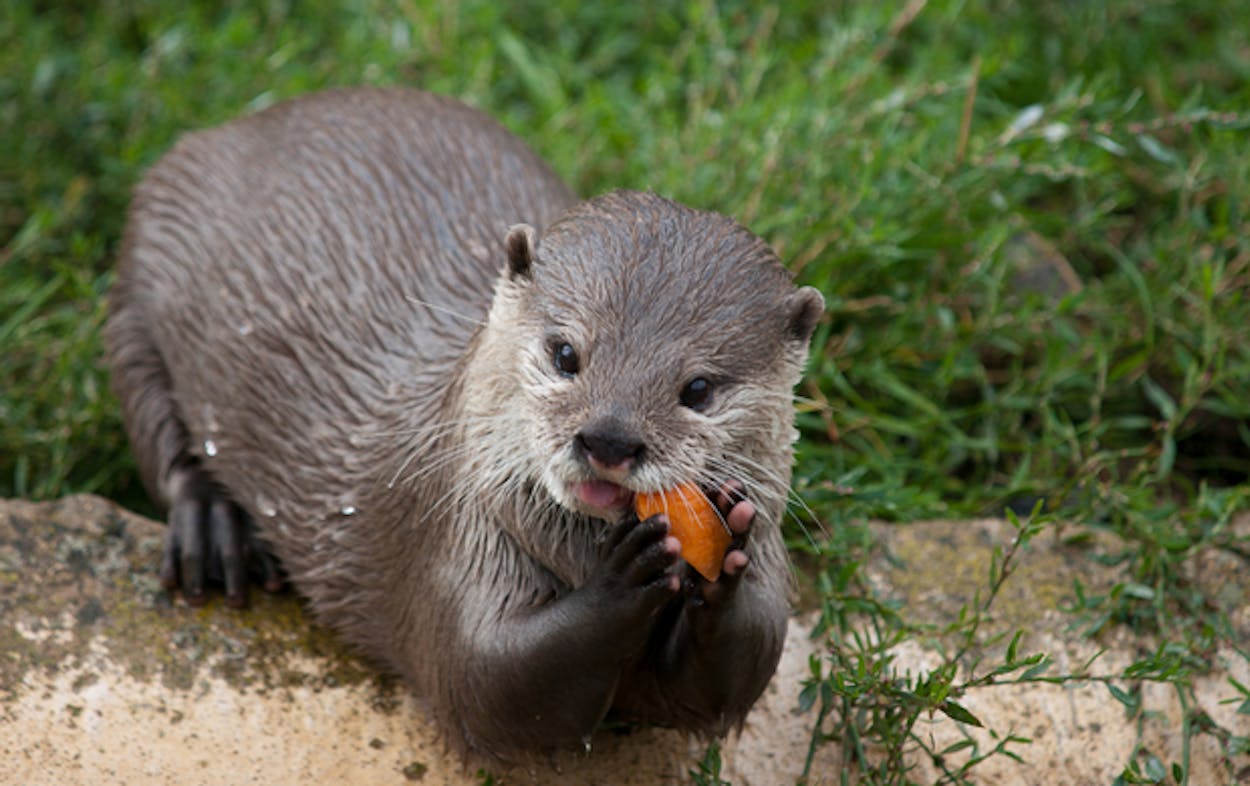Ever wondered how a zoo tends to the varied dietary needs of animals ranging from sea lions to vampire bats? Well, Allan Turner had a piece in the Houston Chronicle on Monday that took readers inside the Houston Zoo’s commissary, which whips up meals for the zoo’s six thousand animals every day.
This gem of a piece is the kind that will, in the words of Longform.org’s Max Linsky, “transform how you think about something you weren’t thinking about.”
The commissary starts humming at five in the morning, according to Turner.
As Houston residents navigate the morning rush hour, solar-powered carts dart around the zoo, delivering alfalfa to giraffes, dog food to hissing roaches and mealworms to golden-fronted leaf birds. As humans clock in for the day, squirrel-sized fruit bats, dangling upside down in their black-lighted domicile, scarf down banana kabobs, then drop the peels on the floor.
The food fed to the animals is typically of a quality fit for human consumption, though some of the items, including the nearly 100,000 frozen rodents dished out each year, might be turned down by even the most culinarily adventurous eater. But Phyllis Pietrucha-Mays, the commissary chief, has eaten mealworms and even tried a newborn mouse during her tenure, which, Turner described, “is a lot like swallowing a goldfish.”
The quantity of food the commissary handles is mindboggling. “Eighteen million crickets pass through the zoo kitchen annually, along with 26,000 pounds of fish, 40,000 pounds of meat and 98,750 frozen rodents. The larder is stacked with scientifically calibrated feed, as well as milk, yogurt, popcorn, low-calorie peanut butter for overweight elephants and coconut macaroons for diarrheic monkeys,” Turner wrote.
The commissary has an annual budget of $700,000, but rising food prices have hurt them this year. (The zoo is seeking donations through the end of the year to its “Gift of Grub” campaign.) The high cost of hay has been a problem, considering the seven zoo’s elephants scarf down fifteen bales a day. Crickets are also in short supply after a virus swept across the nation’s cricket farms. “While efforts are underway to breed an alternate species, the future of the famed zoo-plate special is in question,” Turner wrote.
- More About:
- Critters







